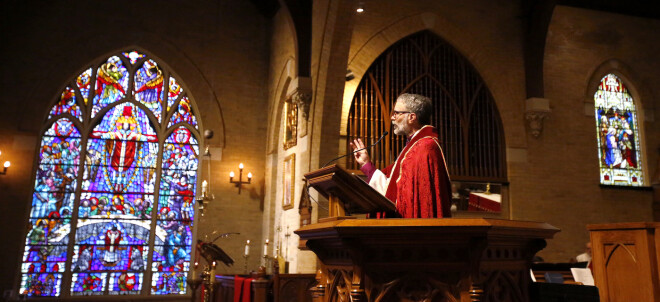Alaskan Missionary Miscellany

I write this blog entry from the House of Bishops meeting in Fairbanks, Alaska. A great deal of the discussion has had to do with the challenges to native life, and hence to ministry with, for, and among native people here, due to environmental, economic, and hence political issues. Through all this, the connection of native people to the land (and here the sea) is the most impressive, and most theologically fruitful, aspect of things.
For me personally it has, quite simply, been a pleasure to be in a church setting among native people, with their own unique self-possession, humor, and tenacity. All this has also reminded me of how rich a missionary history Alaska has had. I have learned something from my friend bishop Mark MacDonald, formerly of Alaska, about the remarkable early missionary history, with figures like (an earlier MacDonald) raising up indigenous leadership from the beginning under demanding conditions. As a young priest in the 1980’s I recall meeting older colleagues who had worked in the 1960’s with the dashing Flyin’ Bishop Gordon - it was the place to be then! Gordon was also the pioneer of Teach Each A Ministry, which would become the local-ordination-oriented Total Ministry, which was the dominant theory when I worked in Navajoland, though in more recent years its shortcomings have become clear.
The central thing about missionary history is that it is invariably mixed - heroic faithfulness, creative indigenous response, and enormous wrongs too. In the schools of Alaska, in western Canada (most tragically), in an earlier era in Navajoland, and elsewhere in the American West, young native people were forbidden to speak their mother tongue and punished if they did so. This had led to the long, hard effort to reclaim these languages and the cultures they bear. It also set back the evangelistic effort itself, since translation usually lies at its heart (for this the work of Lamin Sanneh has been crucial). It has been through the vehicle of language that conversion and cultural renewal have often taken place in tandem.
There are lessons, sometimes hard, on both sides of the ledger. Hearing several tales of native people forbidden to speak their language reminded me of a church conference I once attended on the Hudson River at a center run by the Quakers. They were the leaders in Christian social progressivism in the 19th century, and the pictures on the walls reflected this history: pictures of abolitionists on one wall, of suffragettes on another. But that center was also the site of the gathering of Protestant denominations after the Civil War, for the purpose of divvying up the tribes for ministry in an omnibus comity arrangement. (The Episcopalians were given the Lakota, for whom they were passionate advocates, while the Reformed got the Navajo, among whom I worked). The goal was considered compassionate at the time: the assimilation of native people into the dominant culture. The first two causes still seem enlightened to us now; the third seems the opposite. We realize how fallible our judgments can be, how much easier hindsight is, and how the Holy Spirit is able to work with our efforts, and at times, in spite of them as well.
Salud,
+GRS



